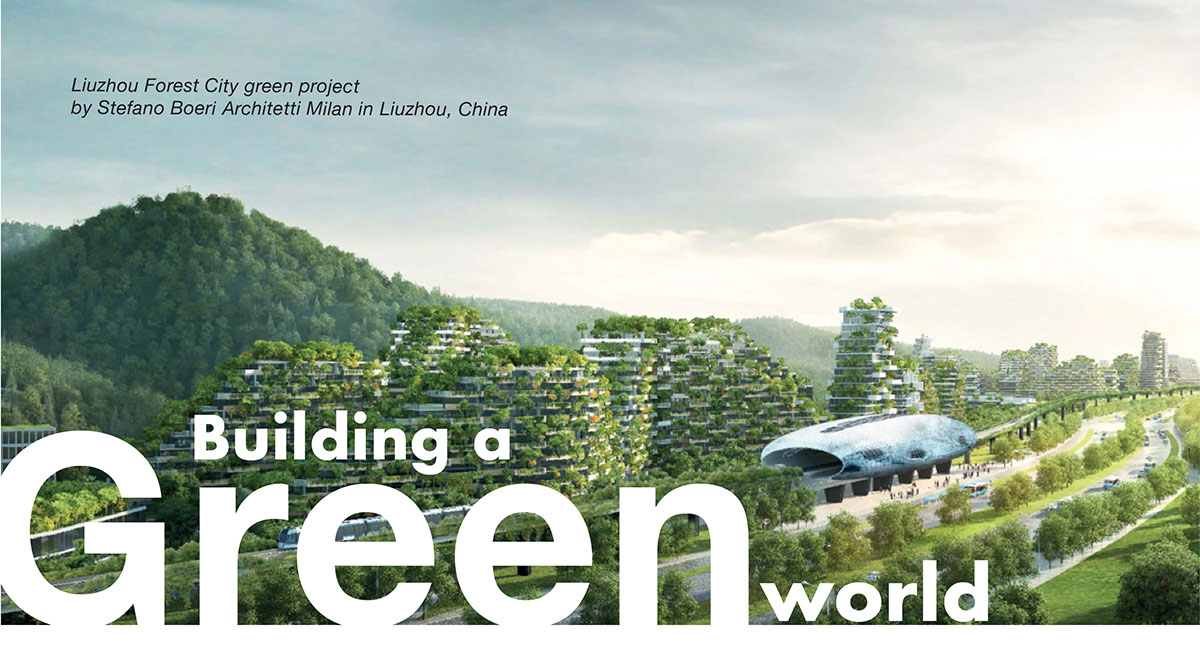
The world’s inspiring green buildings
The Green Revolution worldwide
Richard Fedrizzi, the President of US Green Building Council, stated: “The Green Revolution is taking place everywhere at any time bringing about changes to housing and real estate market, and lifestyle of the community. It is a part of the Sustainable Development Revolution with an ability to change everything by efficient energy use, health, useful buildings that mitigate their significant impacts on urban life, local, regional and global environment”.
According to a recent survey by Dodge Data & Analytics, the global green building project market has increased considerably over the past 10 years, demand for green buildings is expected to increase massively in three years. The World Green Building Trends Report 2018 indicates more than 60% of 2000 representative organizations from 86 countries all over the globe surveyed want to carry out green building projects, increasing from 27% in 2018 to nearly a half (i.e. 47%) in 2021. The reduction in operating expenses by 8% in the first year and the increase in construction assets by 7% in addition to people’s health and wellbeing improvement are contributing factors to organizations carrying out green buildings.
Let’s look through some of the world’s legendary green buildings with Colorbond.
Ng Teng Fong General Hospital & Jurong Community Hospital
Architecture: HOK, USA; CPG, Singapore;
Studio: 505, Úc
Address: Singapore
Ng Teng Fong General Hospital & Jurong
Community Hospital looks like a green-covered
luxury apartment complex rather than a hospital.
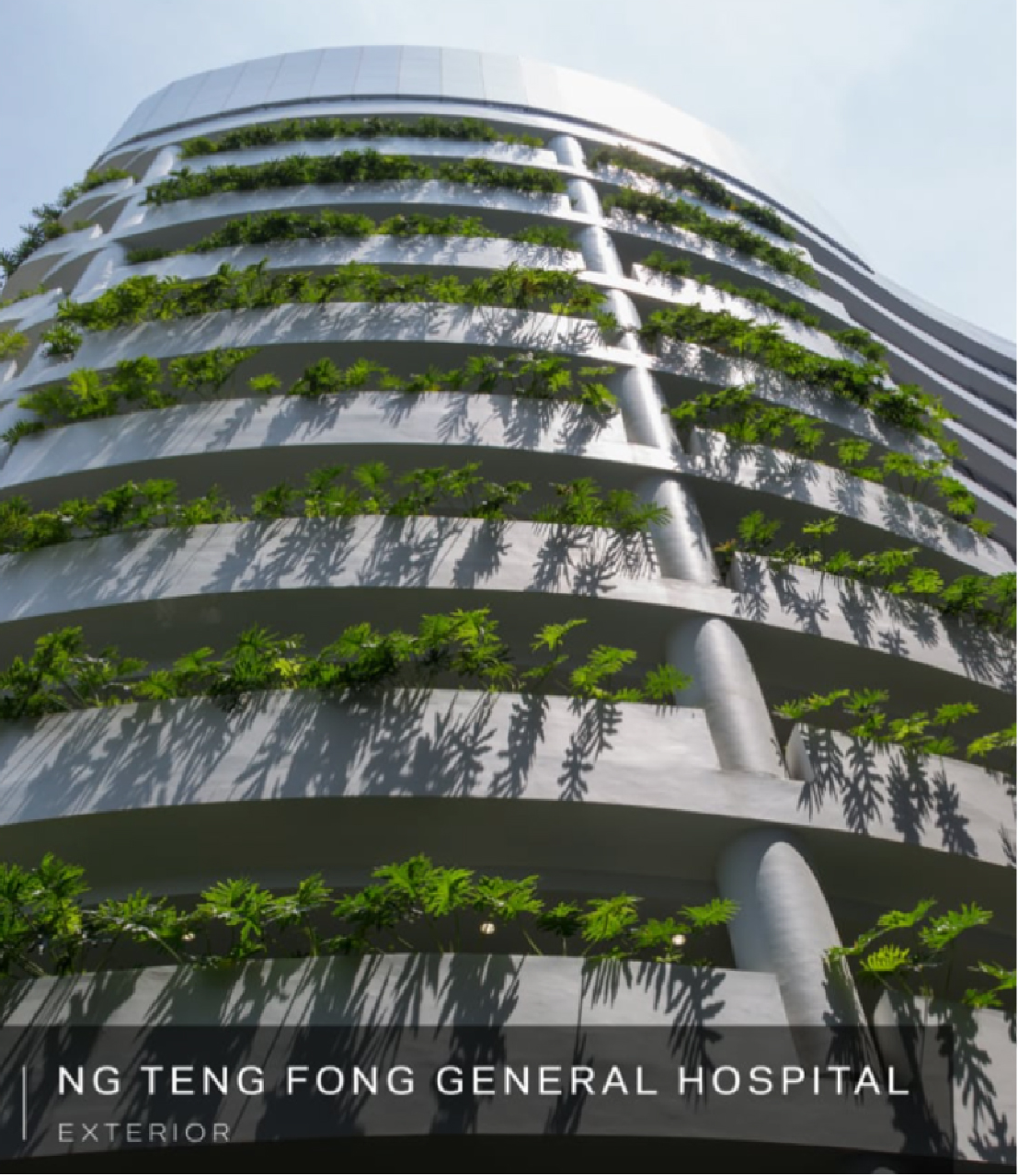
Three distinguished shadow creating strategies are used to maximize daylight and get rid of extensive demand for artificial light inside the building during daytime whereas the natural air ventilation system helps to bring cool fresh air. The hospital makes full use of renewable materials including flooring tile, composite wood and steel. Thus, energy consumption is 38% lower than traditional Singaporean hospitals and 69% lower than US hospitals. It is estimated that the energy savings of the hospital could be supplied for nearly 4,000 five-bedroomed apartments per annum while the water savings could fill approximately 27 Olympic-size swimming pools.
R.W. Kern Center
Architecture: Bruner/Cott & Associates
Address: Amherst, Massachusetts
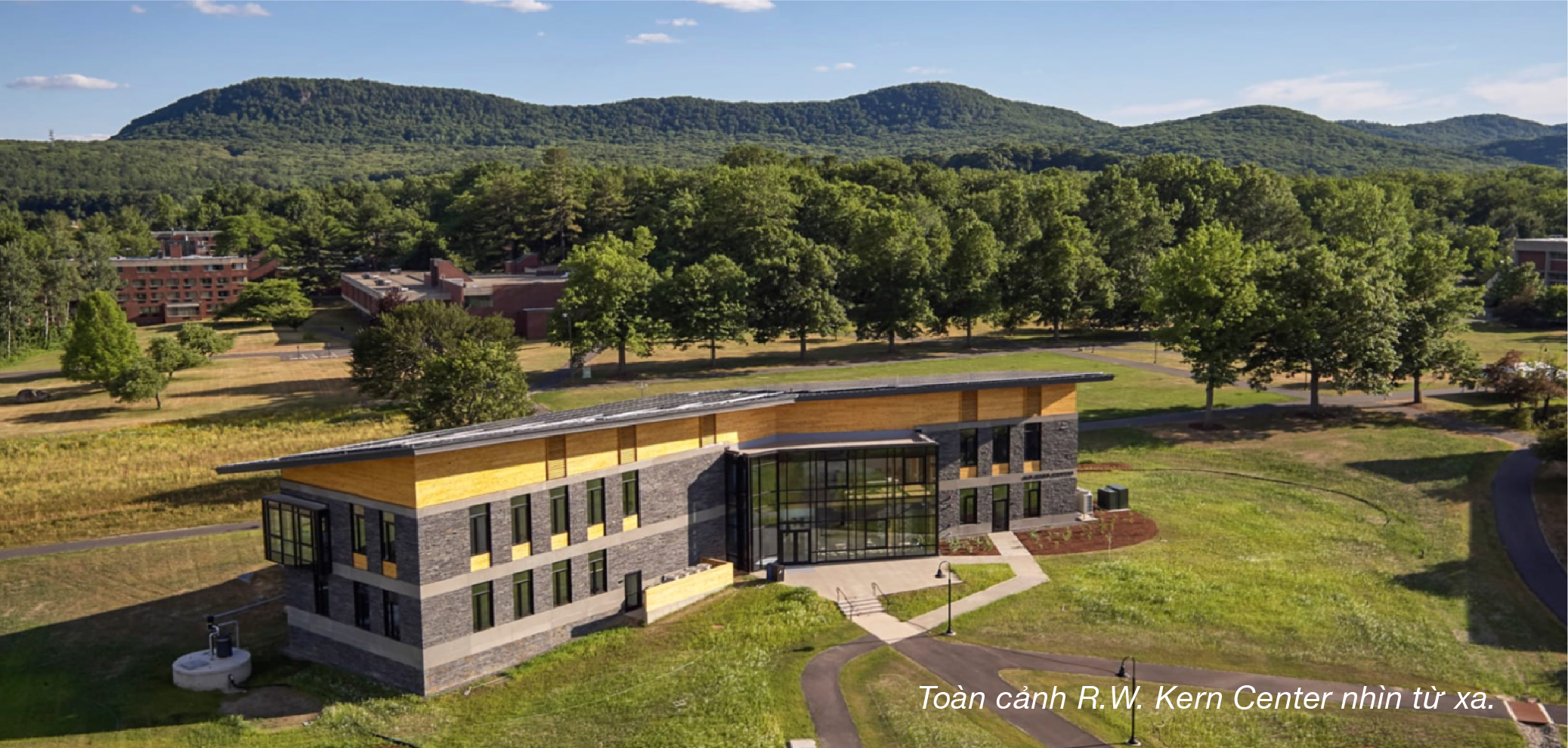
Designed as a part in The Living Building Challenge standard, R.W. Kern Center of Hampshire University is an original green building with capability to generate its own energy source and excellent sewage treatment. The building is aimed at developing a non-energy building in the cold weather conditions with sole use of rainwater and sustainable and non-toxic local materials. In an objective to optimize heat effectiveness, the center has designed its campuses smartly, accordingly, walls could be moved or rearranged for future use without structural disconnection thanks to open glulam wood frame.
The National Oceanic and Atmospheric Administration
Architecture: HOK
Address: Honolulu, Hawaii, USA
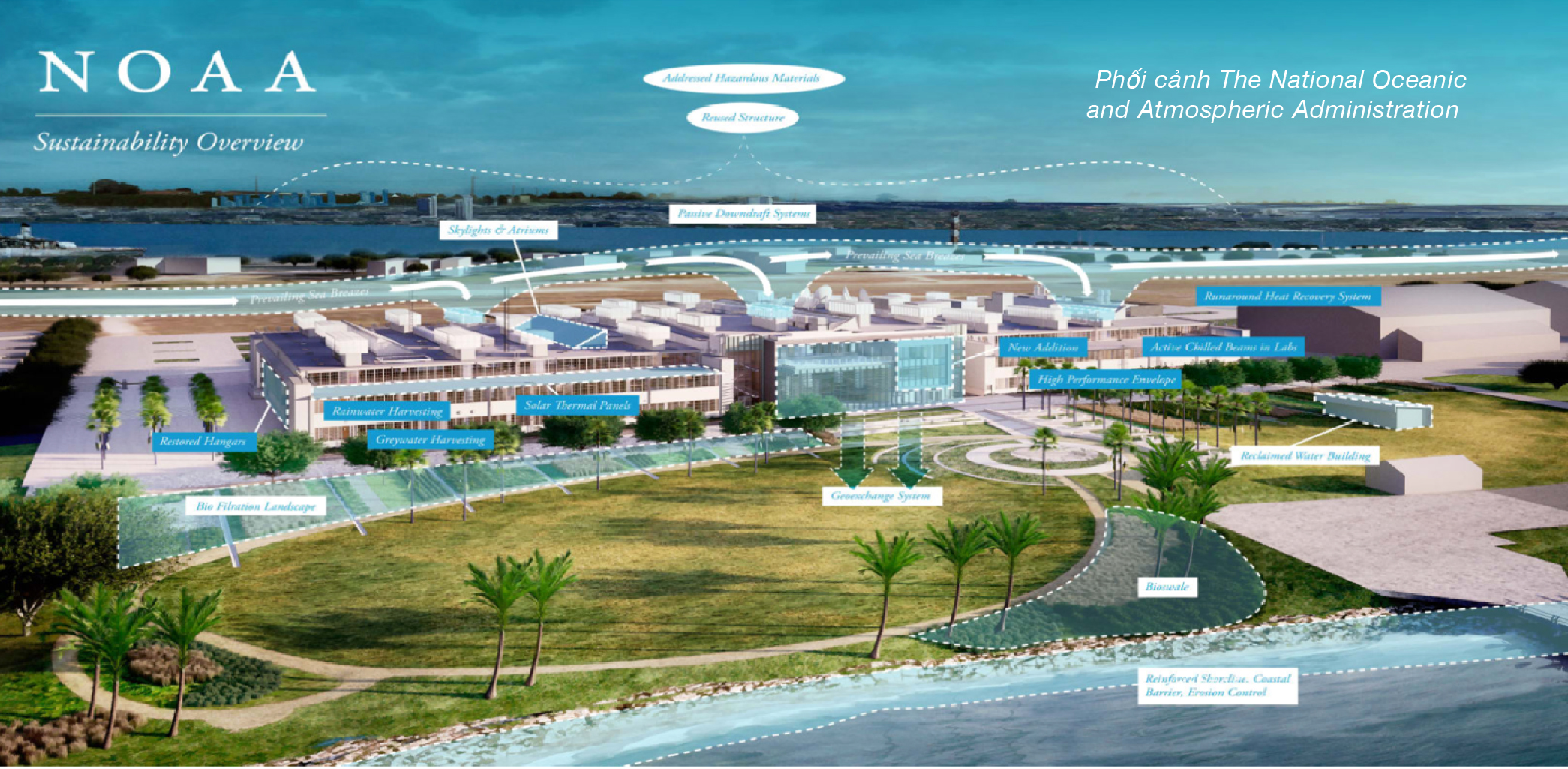
Reusing two aircraft buildings in World War II, National Oceanic and Atmospheric Administration, located on the beautiful Oahu, Ford Island, Hawaii, USA, is one of the buildings awarded prestigious LEED Gold Certification. The water system is designed to ensure that no drop of water is leaked from the base, but distributed into the water system to irrigate instead while the cooling system on the roof and hydraulic system using sea water help to product natural fresh air.
The rare green buildings in Vietnam
Looking from outside, Forest In The Sky
looks like a vertical green garden
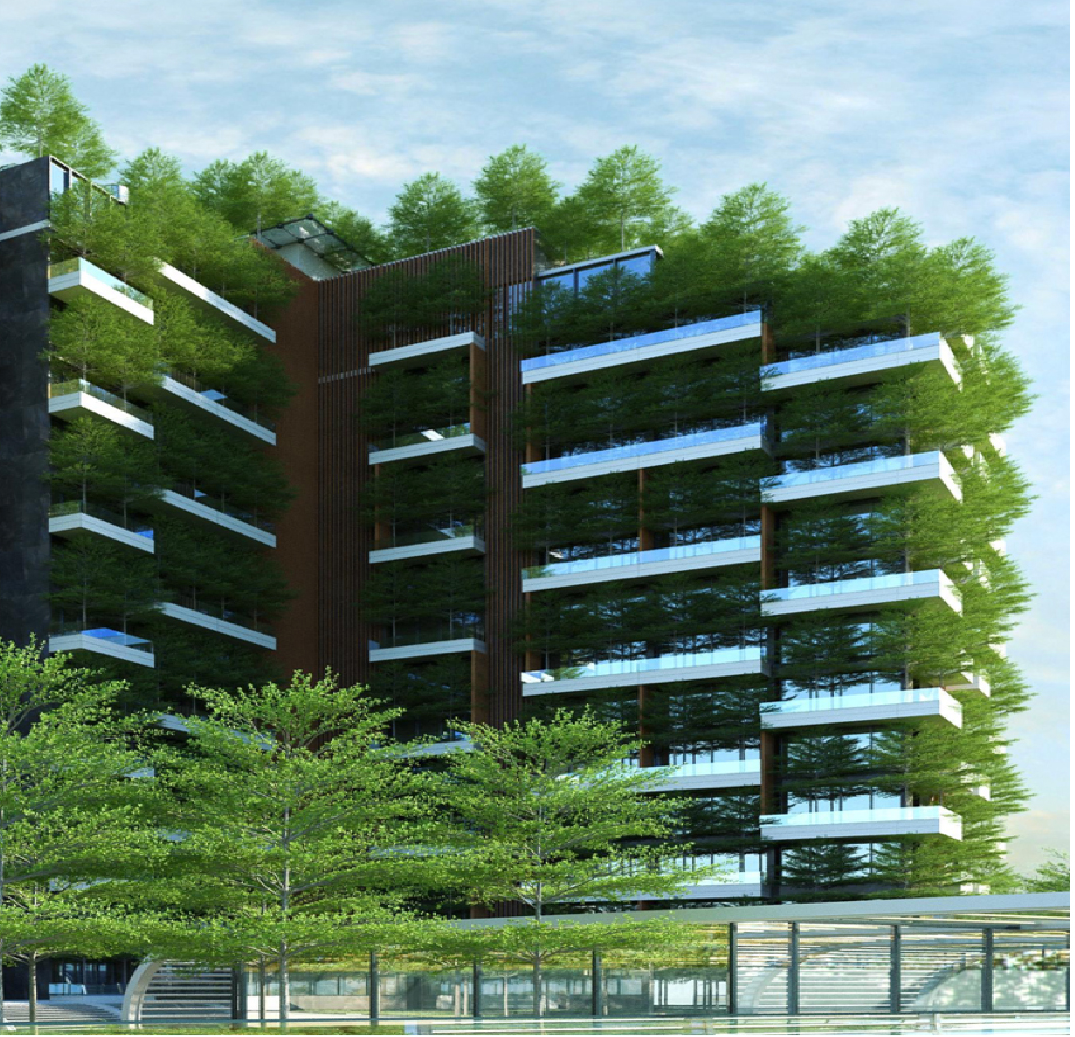
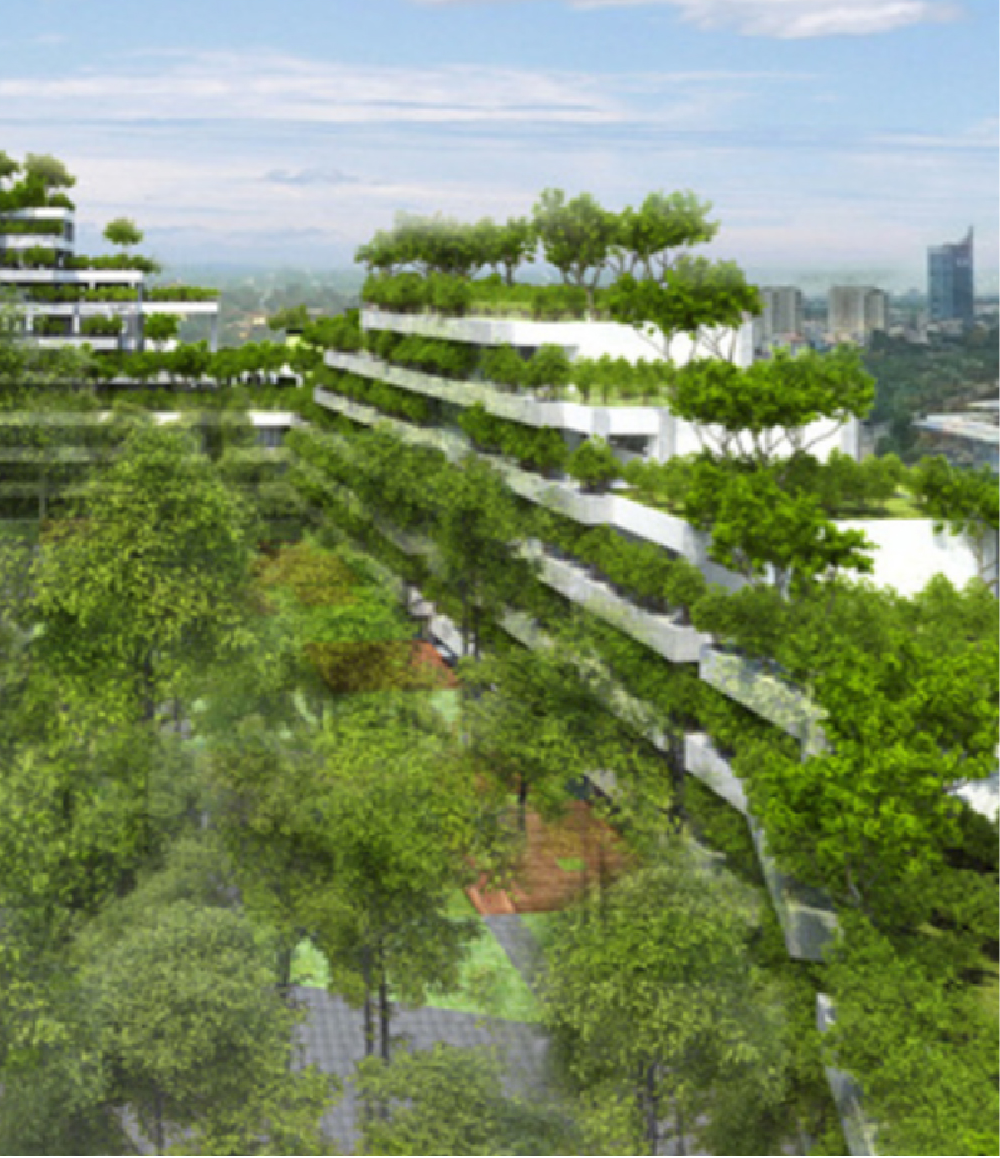
Perspective of FPT University building by Vo Trong Nghia,
a famous architect for the green buildings that made in Vietnam.








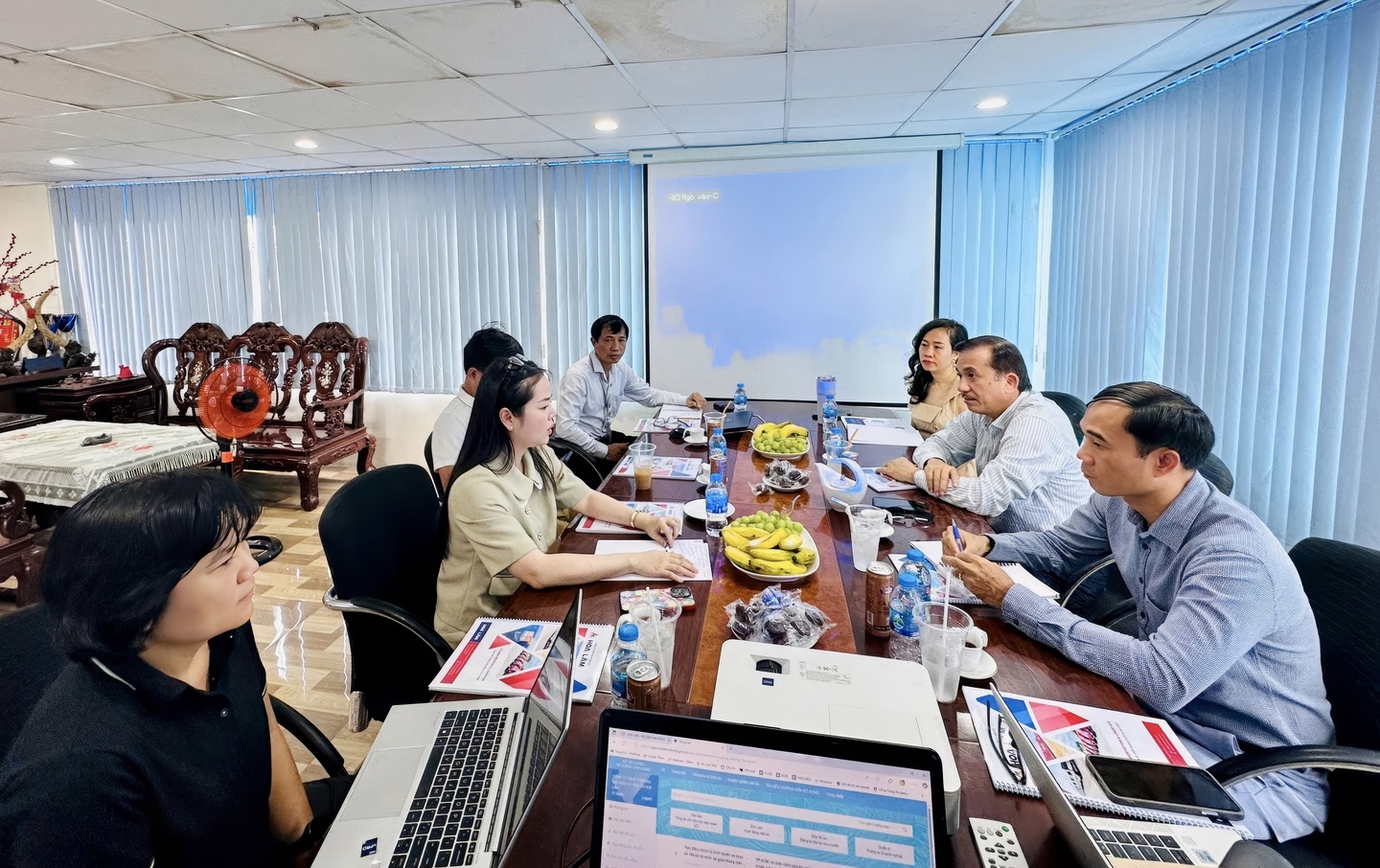
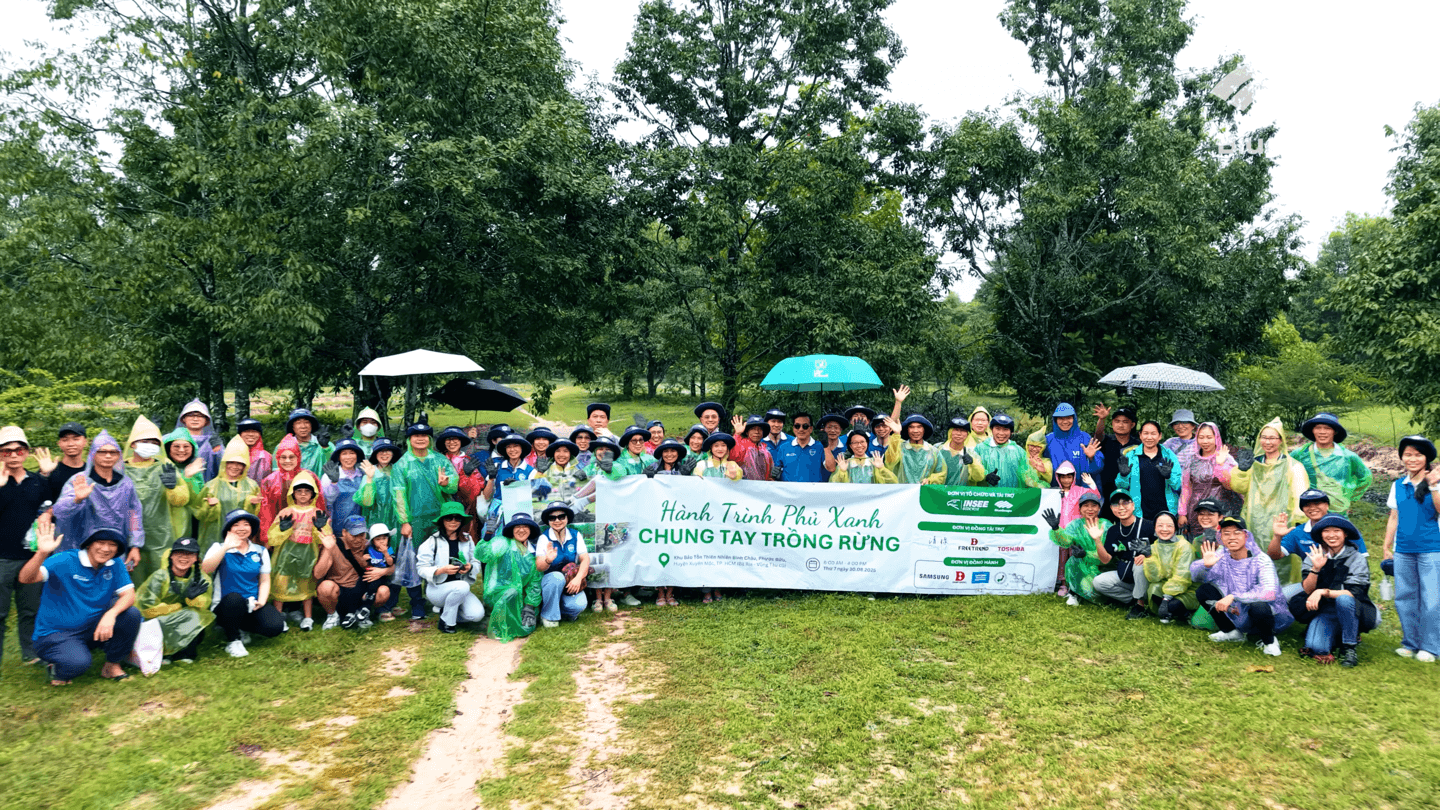
Comment